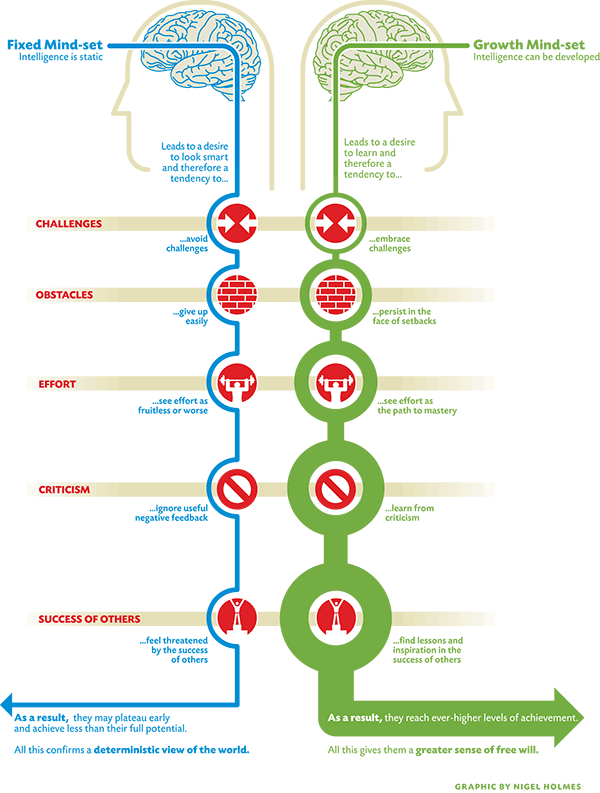The following are the links to articles, blog post, YouTube videos, TED Talks, and books that were used or referenced in the PIDP 3210 Curriculum Development course:
Course Slides, DACUM Template, Outcomes Template, Resources, & Course Handouts
Passive Voice
What’s Passive Voice? Consider this extreme example of passive voice:
It has been observed in a frequency all too significant that students upon submission of their written assignments have been inclined to have chosen a manner of composition that is too often far from one that is direct enough to be understood as conveying meaning in a fashion that is most expedient.
Same idea in Active voice:
Students too often submit assignments where they don’t directly write what they mean.
OR
Students too often turn in work where they don’t directly say what they mean to say.
Use the following sites to help you prevent passive voice:
How to Use Zombies to Kill Passive Voice
7 Examples of Passive Voice (And How To Fix Them)
Examples of Active and Passive Voice
APA Formatting
Purdue OWL APA Style guide
APA Style – Official APA Style Guide site
Presentations
The Head Won’t Go Where the Heart Hasn’t Been
How to Share a Compelling Idea
FREE Multimedia Version of Resonate
7 secrets of the greatest speakers in history
Want to Change the World – Tell a Good Story
Power of Story
Why Your Brain Loves Good Storytelling
Blooms Taxonomy Interactive Model
http://www.celt.iastate.edu/teaching-resources/effective-practice/revised-blooms-taxonomy
Not Suited For School But Suited for Learning
You will find this video, learning philosophy and links to many of my presentations, and my favorite blog posts on my blog About page.
The Head Won’t Go Where the Heart Hasn’t Been
Benjamin Bloom argued that we need to address all the domains and find a balance. We often overemphasize the cognitive domain, relegate the psychomotor to the trades or other overtly physical disciplines and limit the affective domain to ethical or values issues. This limitation will severely limit the change that is necessary for learning. The blog post The Head Won’t Go Where the Heart Hasn’t Been post includes a more detailed explanation of the importance of the affective domain and has links to the Behavioral Science (BS) Guys video How to Change People Who Don’t Want to Change and also a related TED Talk Why TED Talks don’t change people’s behaviors.
Organizational Change
Change can also be difficult because sometimes people like things the way that they are. The post People how like this stuff…like this stuff explores the 4 steps that you need to follow to be successful with organizational change. These 4 steps have become part of the Masters Course EDLD 5304: Leading Organizational Change.
Change in Focus
If you really want to improve your practices and pedagogies, then you need to get clear on your primary focus because your focus will determine where you will go. The use of authentic learning opportunities can help you and your organization stay focused on helping your learners to realize their full potential and grow into future leaders who will help improve our world.
Because the century-old challenge of content delivery has been solved by mobile technology we can move forward to use authentic learning opportunities that provide the context for learning.
Fixed VS Growth Mindset
Growth Mindset vs. Fixed Mindset
The power of believing that you can improve | Carol Dweck
The Power of belief — mindset and success | Eduardo Briceno | TEDxManhattanBeach
You will find a very useful Fixed vs Growth Mindset graphic and a short comparison of how the Fixed Vs Growth Mindset is equivalent to the Print Vs Digital Information Age on the blog post Fixed Vs Growth Mindset = Print Vs Digital Information Age
Carol Dweck’s book Mindset: The New Psychology of Success is definitely worth the read.
The Science of Receiving Feedback
Mapping Your Learner’s Journey
If we view our course Outline or Syllabus as a map rather than a contract we will do a better job in getting our learner to where they need to be. Consider the ideas in the post Mapping Your Learner’s Journey.
Mistakes are for learning
It’s a Mistake Not to Use Mistakes as Part of the Learning Process blog post refers to Brian Goldman’s TED Talk:
Doctors make mistakes. Can we talk about that?
Intrinsic VS Extrinsic Motivation
RSA Animate – Drive: The surprising truth about what motivates us
Daniel Pink’s book Drive: The Surprising Truth About What Motivates Us
is worth the read.
Don’t Let Learning Styles Limit Your Learning
Learning Styles Don’t Exist
Content Saturation
In the article Rescuing Nursing Education from Content Saturation: The Case for a Concept-Based Curriculum Jean F. Giddens and Debra P. Brady argue that nursing education has been plagued with a saturation of content for many years. Fortunately, they offer recommendations on how to move away from content delivery and saturation and how to create a learning environment based on a conceptual approach to curriculum development. Even though this article is focused on nursing it is a good read for any instructor in any discipline.
People Don’t Buy What You Do They Buy Why You Do It
Start with why – how great leaders inspire action | Simon Sinek | TEDxPugetSound
Simon Sinek’s book Start with Why: How Great Leaders Inspire Everyone to Take Action
is worth the read.
Parenting and Child Development
There were several discussions over the final weekend regarding parenting and Gary Neufeild’s book Hold On to Your Kids: Why Parents Need to Matter More Than Peers was referenced and is worth the read.
The BEST TED talks to take in:
Sir Ken Robinson: Do schools kill creativity?
Sir Ken Robinson: Bring on the learning revolution!
The blog post Want to Change the World – Tell a Good Story offers links to the top TED Talks of all time.






























